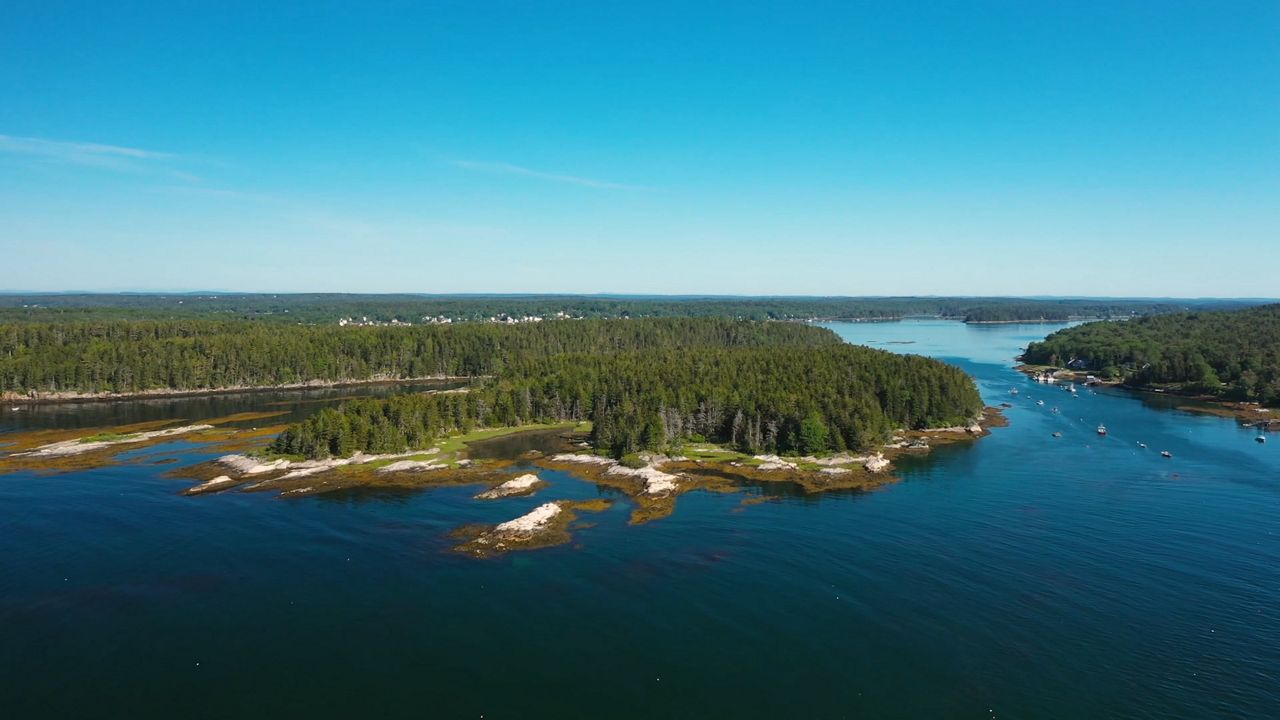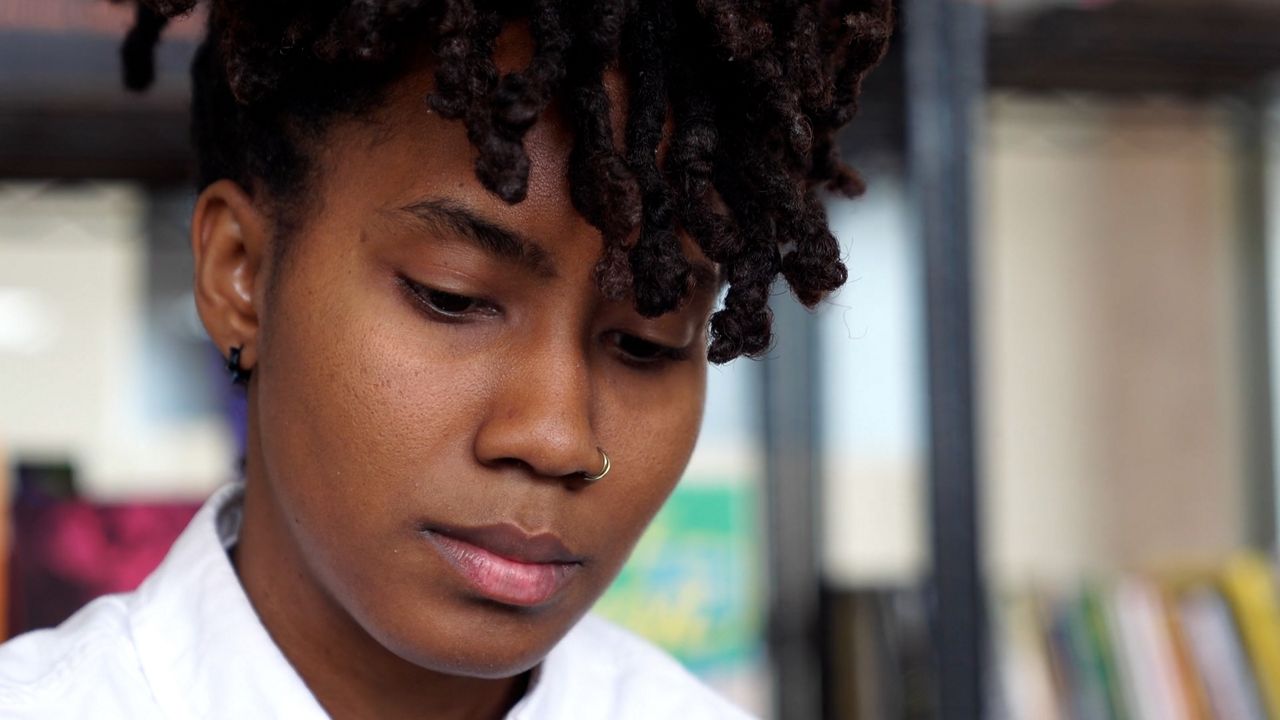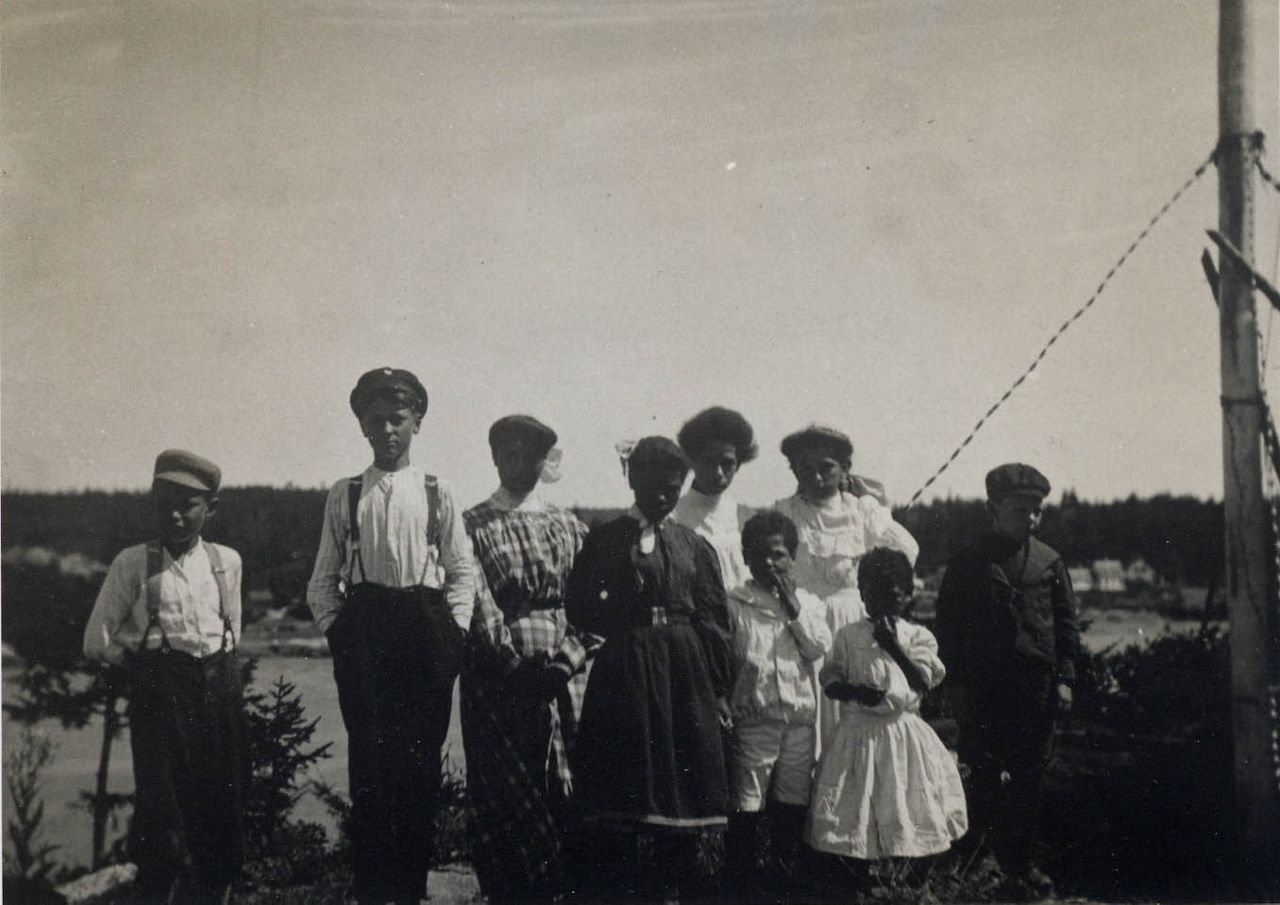MALAGA ISLAND — It’s one of Maine’s more than 4,000 islands, a teardrop-shaped outcropping of rock and pine, surrounded by bobbing lobster trap buoys that signal to visiting tourists they have reached Vacationland.
Malaga Island is by appearance a woodland paradise; its human history is anything but edenic.
Few Mainers know the whole story — or for years kept silent about it.
But now, amid scholarly and genealogical research, what happened there more than a century ago is prompting a reexamination not just of the island, but of how Maine tells its past. That exploration comes amid a larger conversation about history, culpability and justice.
“The New England narrative, the Maine narrative forever, has been that we are the abolitionist area of the country,” said Kate McBrien, Maine State Archivist. “And we very rarely ever acknowledge that we actually have a deep racism within our history as well. And this is a massively powerful, visible example of state-sponsored racism.”
Malaga (pronounced MAH-la-ga) Island, southeast of Brunswick near Phippsburg, is now a nature reserve, devoid of people. There are no houses, or signs of any human life save perhaps for occasional day packers who take a quick boat through the New Meadows River to visit. A walk along its circumference takes less than an hour. Amid the smell of the sea, it’s quiet but for the lapping water, rustling leaves and the occasional scampering squirrel.
It wasn’t always this empty. For decades, people lived on Malaga. And, says Caitlin Gerber, a regional steward at Maine Coast Heritage Trust, “the descendants of them might still be living here if things had gone differently in history.”

Malaga’s descendants trace their lineage back to Benjamin Darling, a free Black man who bought nearby Horse Island in the late 1700s and married a white woman. Their progeny later settled on Malaga Island.
Marnie Darling Voter discovered her connection to Benjamin Darling in 1974. She and her husband were looking into her geneology, and she was surprised to learn that Darling was her ancestor. She went on to research Malaga extensively, letting many others know about their ties to Darling and the island.
But not everyone received the news well.

“We went to visit my folks,” she said, “I was so excited. I just thought this was just absolutely amazing.”
She began to tell her father the story.
“And he said, ‘stop.’ And he looked at my husband and he said, “If you ever try to speak to me about this again, you are not welcome in my home because it's not true.”
Her father refused to believe that he was descended from people who weren’t white.
“He was of that generation. I mean, that whole generation, with few exceptions, was taught to be racist,” said Darling Voter.
Asked if she believed her father knew his ancestral story or didn’t want to know it, Darling replied: “Both.”
Malaga descendant Khamani Harrison learned of her family’s connection to Malaga Island about a decade ago, when she moved from California to Connecticut for college. The story was starting to be shared more widely by historians, other descendants, and archeologists.

“We've all had an emotional reaction to finding these things out,” she said during a recent interview. “Most of my side of the family holds on to the pain and the shame of what happened. It's hard to kind of see past that.”
Malaga’s story
Starting in about the 1860s, the island Benjamin Darling’s descendants helped create was home to a small, poor community of fishermen and their families.
“They had toys, they worked, they cared, they played, they fussed, just like the rest of us,” said Nathan Hamilton, an archeologist at the University of Southern Maine who has performed archeological studies on the island.
Apart from fishing, they ate local birds and traded with a mainland store for supplies; one woman took in laundry from a nearby resort for cash.
In short, they looked much like any others in the area, busy with families and trying to survive, hoping for bites in the cold deep of Casco Bay.
There was one difference: Darling’s descendents were now a group of Mainers of mixed, or different, races, living together.
Researchers believe two major, interrelated forces were at play in what happened. Around the turn of the 20th century, Maine’s shipbuilding and fishing industries began struggling.
“The coast of Maine was desperate to find a new industry to take over and employ and support the economy,” McBrien said. “They thought tourism was going to be the new industry to save Maine.”
The era also coincided with the growth of eugenics, the debunked belief in selective human breeding to improve humanity’s genetic composition. Some in authority began to see those of different or mixed races as a threat to civilization.

In all, the sight of Malaga's poor, multi-racial community ran against hopes to lure white tourists to the area from cities farther south — and against hopes to preserve its white character. Wild propaganda against the islanders began circulating — whipped up by newspapers. Sensationalist postcards were also the rage then, and pictures of Malaga became curiosities to pass along.
“I found one newspaper article where they said there were tunnels under the island that the kids would hide in and they'd lived in the tunnels for so long they had horns growing out of their head,” McBrien said.
After a series of ominous visits, officials from the state of Maine issued a notice. By the first of July, 1912, the more than 40 people who lived on Malaga would have to leave.
“They told the people who remained...you need to be off the island. You’re evicted, you’re gone,” McBrien said.
Some found refuge on the mainland; others, without the light skin that could equal acceptance, were forced to go from community to community in search of a home.

Khamani Harrison’s great-great grandparents, Robert and Laura Tripp, put their house on a boat — traveling until another eviction forced them to once again unmoor.
This went on for a couple of years, until one night, Laura Tripp got very sick amid a storm.
“When her husband in the storm left the houseboat to go fetch the doctor, Laura died,” McBrien said. “And the storm was so bad, the children actually had to lay on her body to keep it from rolling off the boat.”
“Physically insert yourself in a circumstance like that — like actually insert yourself in that kind of circumstance and think about the kind of trauma that was passed down to the family,” Harrison says now.
One of the children on the boat was the father of Khamani Harrison’s grandmother, Gloria Tripp Harrison. Learning Malaga’s history helped Gloria Harrison comprehend her father’s lifelong anger and abuse.
“When he'd been drinking and then it was like hell on wheels, believe me,” she said. “it was almost like he’d start drinking and all these things would come back to him...I couldn't imagine anybody being that destructive and not having something terrible happen to them.”
For Part 2 of this series on Malaga Island, please click here.








